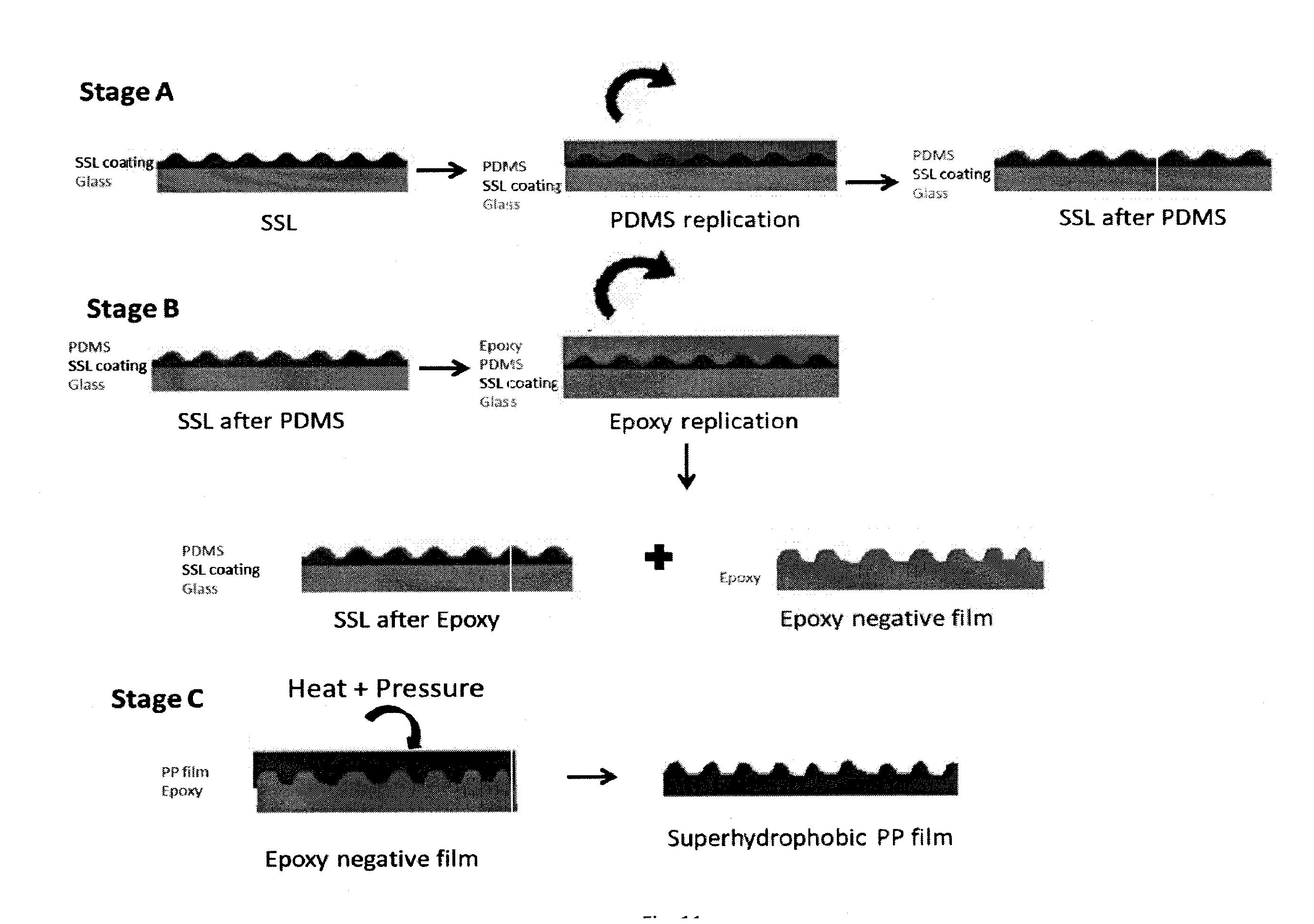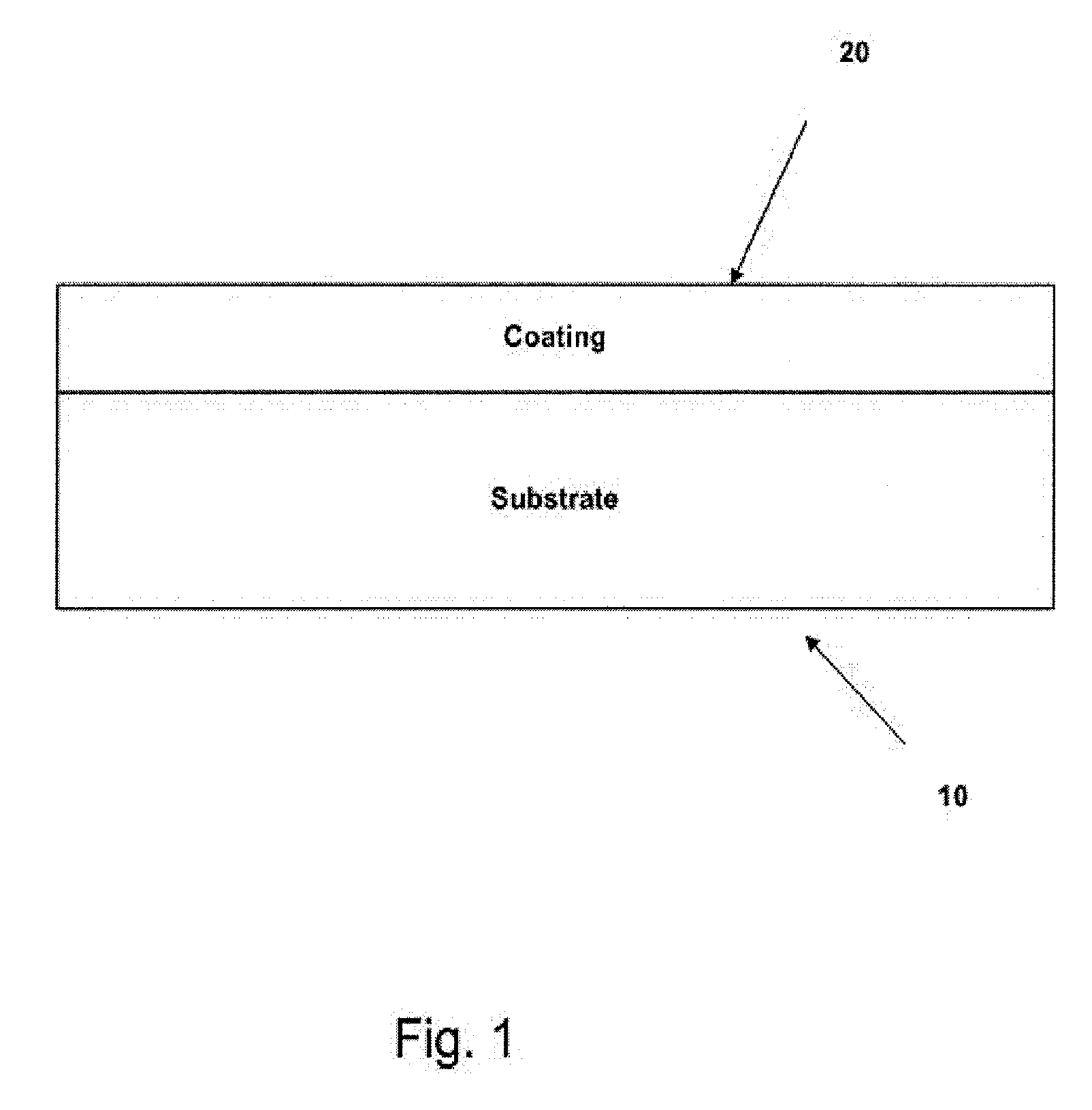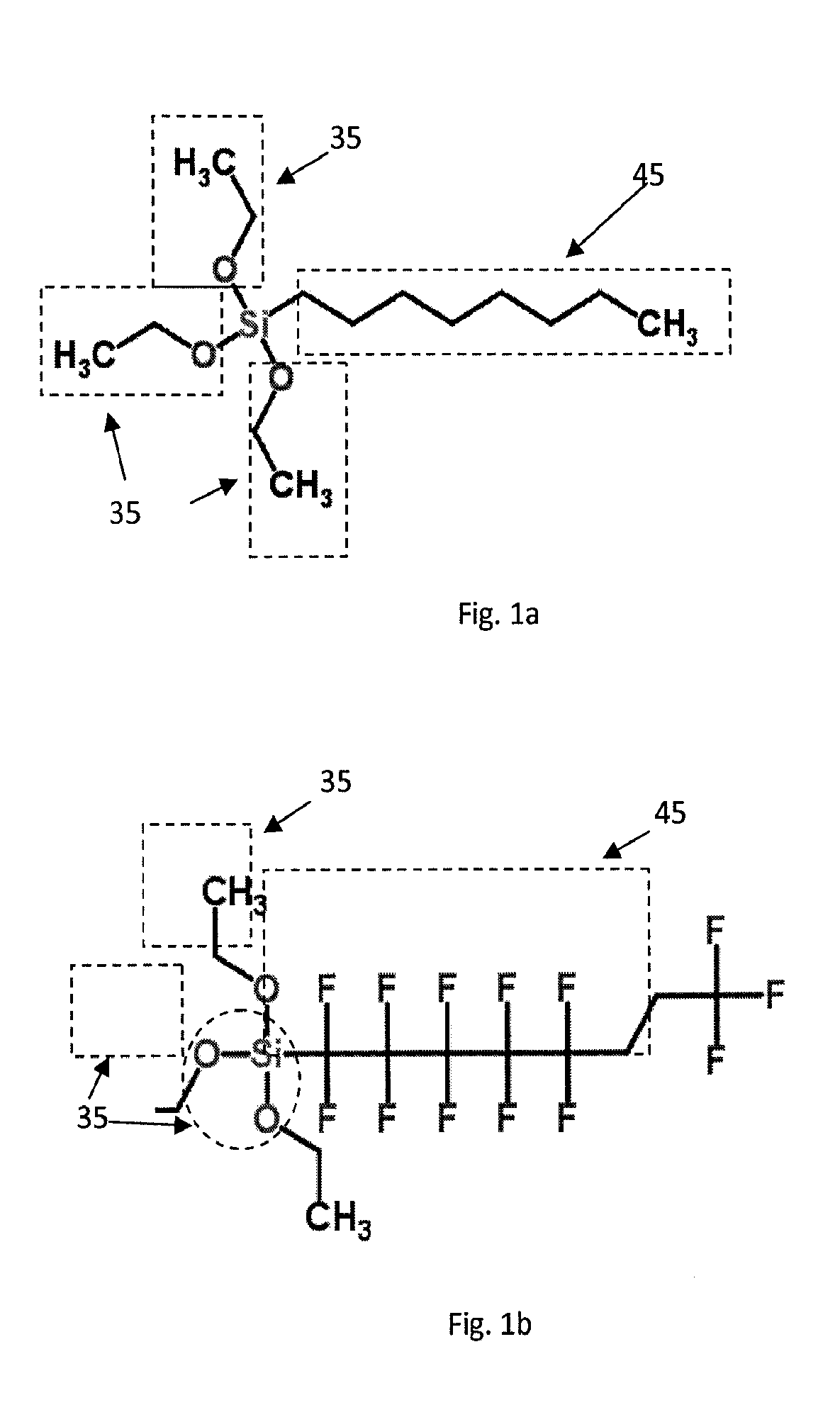Methods and formulations for durable superhydrophic, self-cleaning, and superhydrophobic polymer coatings and objects having coatings thereon
- Summary
- Abstract
- Description
- Claims
- Application Information
AI Technical Summary
Benefits of technology
Problems solved by technology
Method used
Image
Examples
exemplary embodiment ii
PP Replication Using Epoxy Resin
[0109]Step 1: First 2 wt % superhydrophobic coating was prepared and spin coated on glass substrate.
[0110]Step 2: Then PDMS replication is done on the superhydrophobic coating coated glass surface by using Sylguard 184. First PDMS solution is prepared in 10:1 ratio with base and hardener. Then this thoroughly mixed solution is kept under vacuum to remove the air bubbles for the replication. Then this PDMS solution is poured on top of the superhydrophobic coating coated glass surface and, in one instance, cured at 85° C. under vacuum for 6 hours. (In another instance, the PDMS solution is poured on top of the superhydrophobic coating coated glass surface and cured at 150° C. under vacuum for him 15 min. Then the cured PDMS is carefully peeled from on top of the superhydrophobic coating coated glass surface which leaves very thin layer of PDMS on the superhydrophobic coating coated glass substrate. The surface with a thin layer of PDMS is still superhyd...
PUM
| Property | Measurement | Unit |
|---|---|---|
| Temperature | aaaaa | aaaaa |
| Temperature | aaaaa | aaaaa |
| Temperature | aaaaa | aaaaa |
Abstract
Description
Claims
Application Information
 Login to View More
Login to View More - Generate Ideas
- Intellectual Property
- Life Sciences
- Materials
- Tech Scout
- Unparalleled Data Quality
- Higher Quality Content
- 60% Fewer Hallucinations
Browse by: Latest US Patents, China's latest patents, Technical Efficacy Thesaurus, Application Domain, Technology Topic, Popular Technical Reports.
© 2025 PatSnap. All rights reserved.Legal|Privacy policy|Modern Slavery Act Transparency Statement|Sitemap|About US| Contact US: help@patsnap.com



